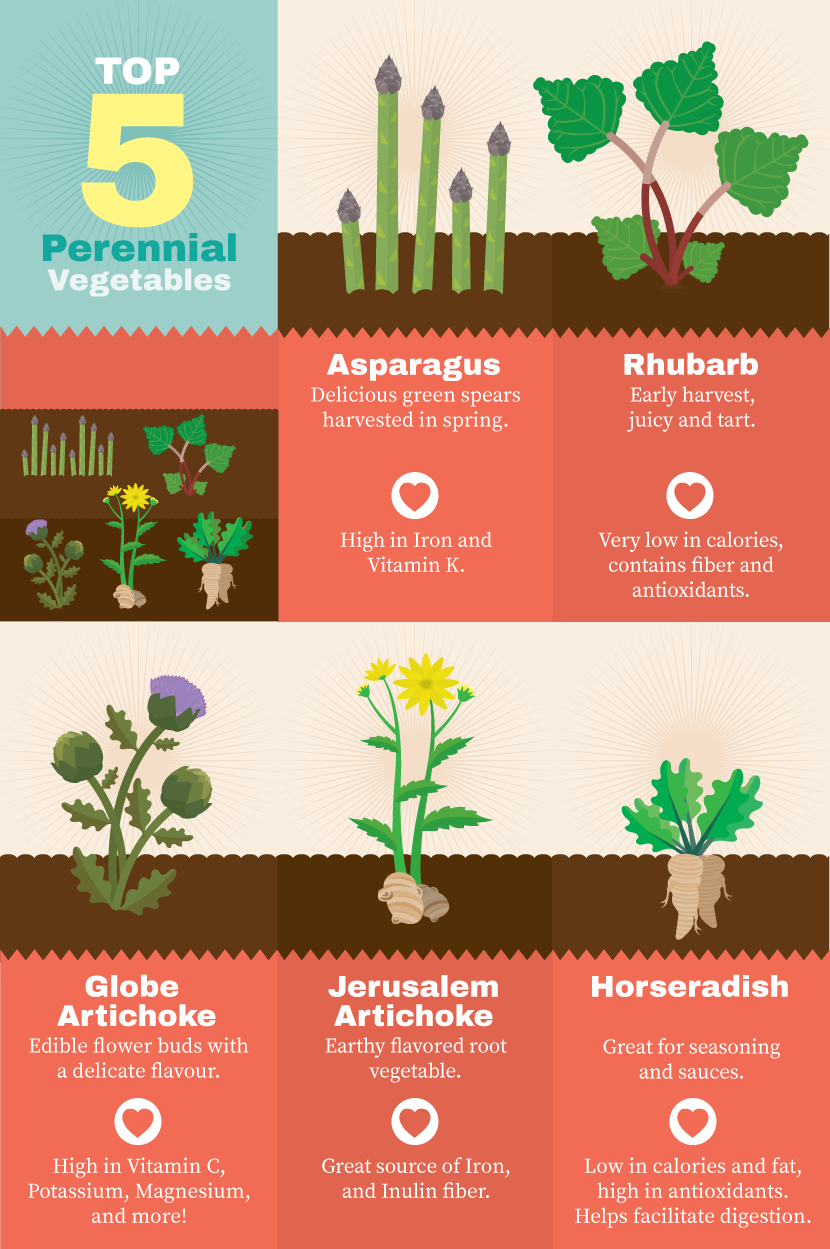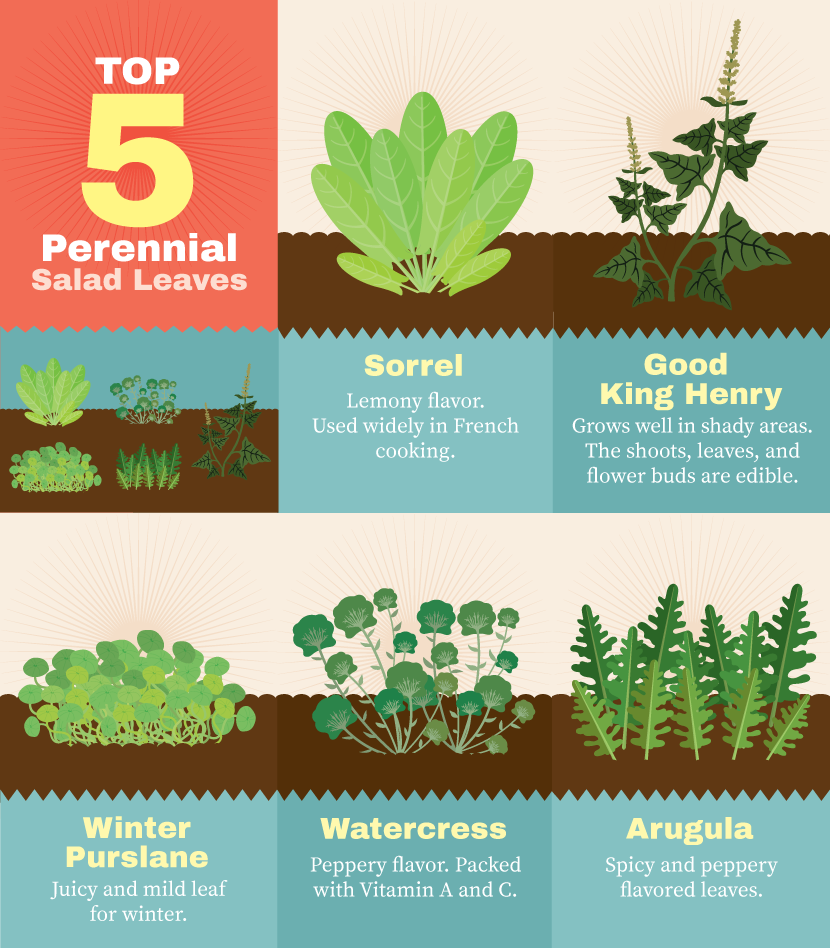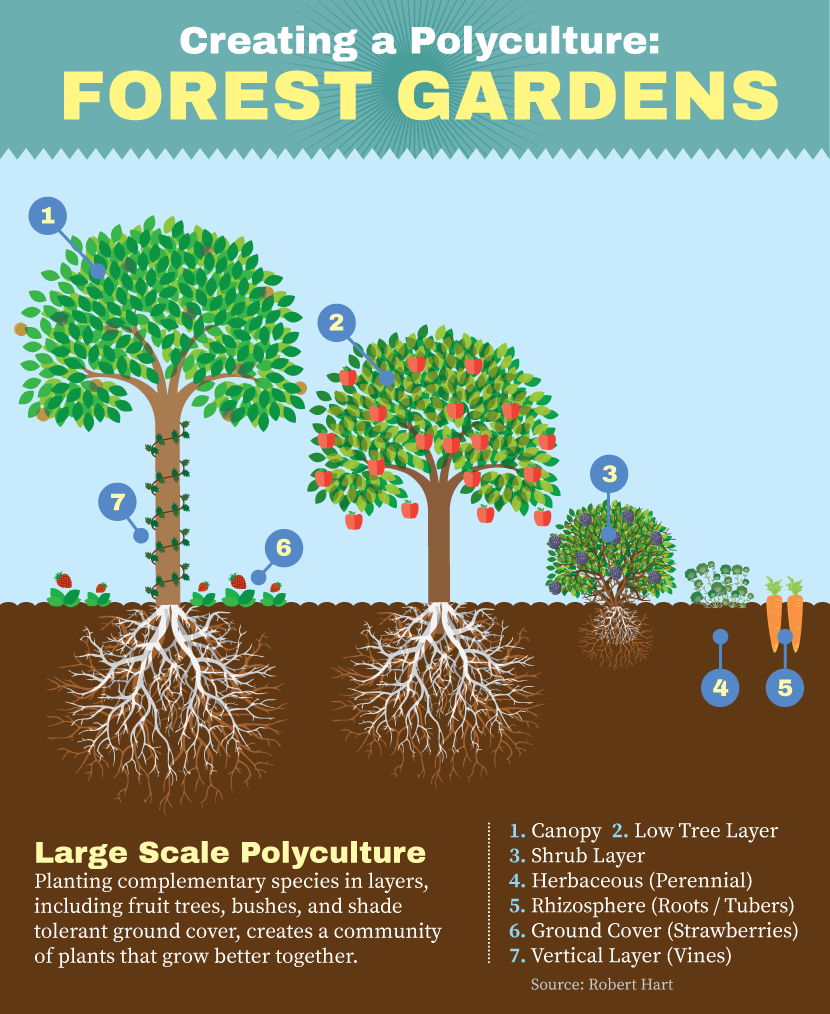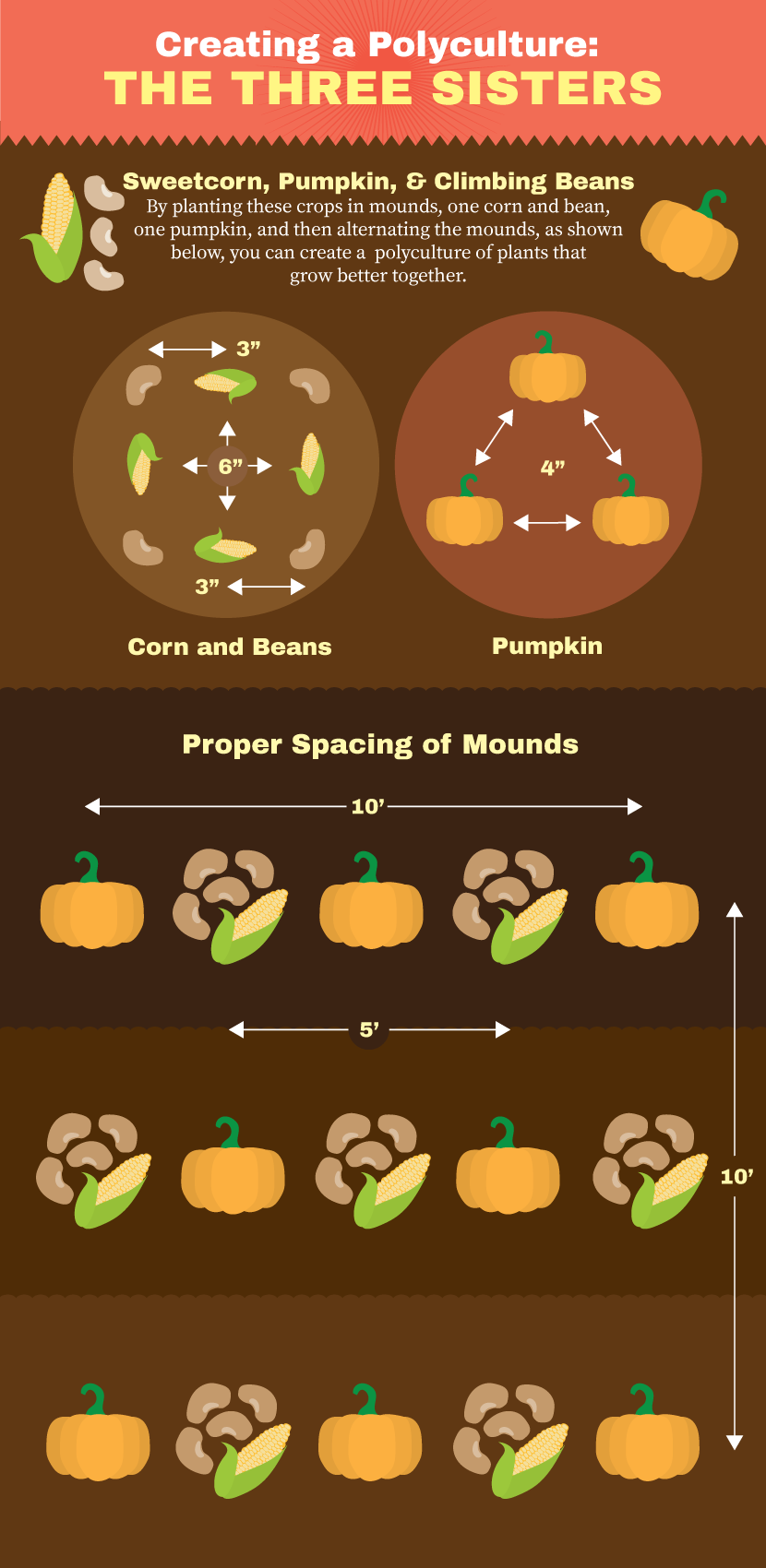Planting Perennials
Vegetables that Return in the Spring
There is a problem at the heart of our traditional vegetable gardens. The issue is this: almost all of our most widely grown crops have to be sown from scratch at the most unpredictable time of year. During a season when soils are cold and weather can range from scorching hot to below freezing, we take the most vulnerable new seedlings and plant them outdoors. Our traditional method for growing is both a race and a gamble. We have to make new plants big and tough quickly enough to be able to deal with the outdoors, and hope their decreasing vulnerability and the increasing outdoor temperatures intersect at the sweet spot that allows the plants to live and thrive for the season.
It’s a tricky juggling act, but there is an alternative in the form of perennial edible plants. The vast majority of the edible plants we grow are annuals. They germinate, mature, bear fruit and die all within one year. Perennial vegetables don’t do this; they may die back down to the ground over winter but they re-emerge each spring with no help from the gardener, and bear their crop every year for a great many years. Perennial edibles don’t offer the quick abundance that annuals do, but once they are settled in the ground and producing, they are wonderfully low maintenance.

One of the great benefits perennial vegetables have over annuals is that many of them appear early in the year. While annual plants are still struggling to get settled into the ground, perennials are shooting forth from their well-established roots: sorrel, asparagus, and rhubarb are among the delicacies that help to fill the ‘hungry gap’ early in the season when few other plants are producing. Perennials help you to extend your growing season, and make you more self-sufficient over the year, usually in particularly delicious ways.
Sorrel, asparagus, and rhubarb are perennials that die down each autumn and leap back to life each spring, but not all perennial edibles do this. There is a host of other perennials that can play a great part in a perennial edible garden; one of the differences between perennial and annual edibles is that there is a perennial to fill every garden niche. You might consider growing ground-cover plants – such as strawberries, alpine strawberries, or mint – underneath your larger plants, as they will smother out weeds and keep the soil moist.

Such plants are also hugely useful for growing up slopes, stabilizing the soil as they go and preventing erosion, perhaps in areas that otherwise could never be productive. You can create hedges with perennial edibles such as elderflower, blackberry, hazel, and Japanese wineberry; use currants in place of shrubs; and add beautifully blossoming fruit trees such as apple, plum, and cherry, which will crop bountifully later in the year. There are also many climbers that can grace pergolas and obelisks and provide delicious morsels. Consider planting kiwis and vines over structures. A good showing of perennials will generally make an edible garden a more beautiful place, and one with a greater sense of permanence and maturity.
Perennial vegetables don’t just make life easier for the gardener, they suit the soil too. Soil is a habitat for worms, fungi and all sorts of micro-fauna that help to build up soil fertility and improve its structure. Such organisms don’t particularly like being dug over once a year (or more) in a traditional system. In a perennial bed there is no need to dig over. Once the plant is in the ground you should mulch thickly once a year with garden compost or well-rotted farmyard manure. This will keep weeds down and gradually the action of the worms will take the nutrients down into the soil. And it’s not just the wildlife under the soil that likes perennial crops. Insects can overwinter in the leaf litter left when perennials die down. Birds can hunt though this and gobble them up. Pollinating insects can visit the blossoms of berrying bushes and fruiting trees in spring. The year-round presence of plants has many more benefits to wildlife than a bare patch of earth.

There are, of course, some drawbacks to growing perennial edibles as opposed to annuals. The first and most obvious is that they can be slow to establish. With most perennials you really do need to see them as an investment and not expect to reap too much in the way of rewards for the first couple of years. Once the roots are established, your efforts will be more than paid back. Weeds can be a problem: because your perennial edibles will not be moved, you need to be sure that the ground is completely clear of perennial weeds before you plant.

Some perennial alternatives to annual crops can also seem fairly unusual if you are not used to them, and it will take a bit of time to get used to cooking with alternative root and leaf crops. Experiment with them and see how you get along with them in the kitchen. You may find you really take to these new tastes and that they become great favorites. There are also a few – though not many – perennials crops that can become invasive and take over large areas of a garden. Mint is a good example of this and should be grown in a pot sunk into the ground if you want to keep it in bounds. Its vigorous nature can make it extremely useful as ground cover where large areas are to be covered.
There is also no harm at all – and a great deal of benefit – in introducing a few perennials into a more traditional edible garden. Try a few of your favorites, and a couple of new perennials that you like the sound of; you may well find that their ease of cultivation and delicious crops will tempt you to add more and more. You will make your garden easier to maintain and more beautiful in this process, as well as giving your soil and your local wildlife a treat.
Embed the article on your site

